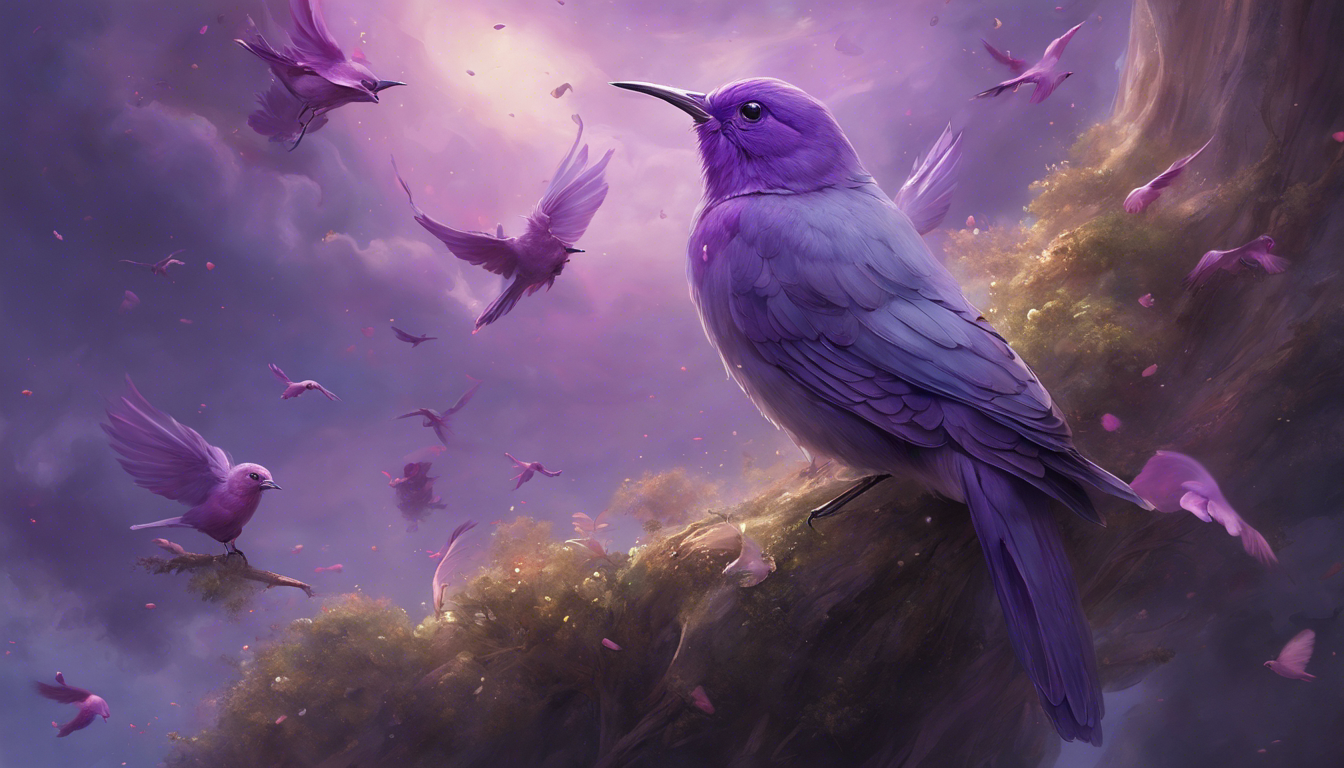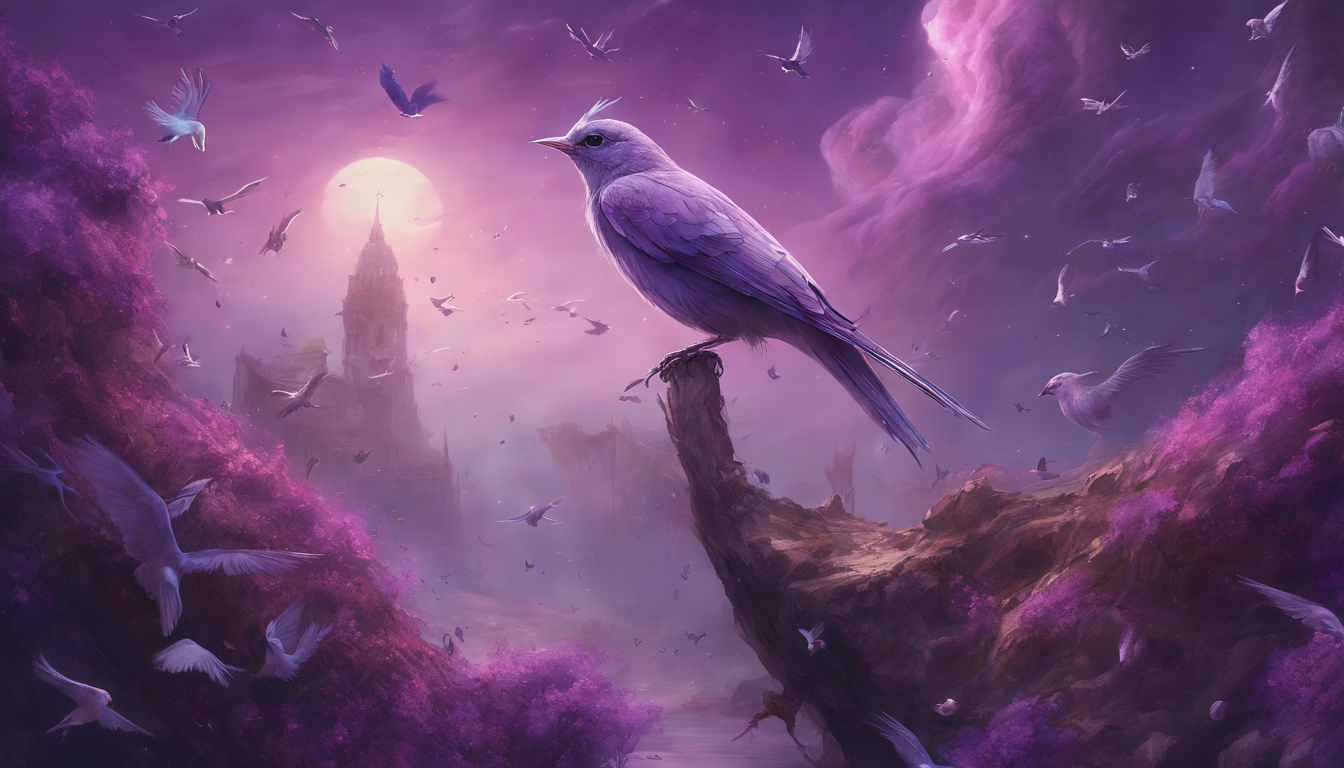The Explanation behind Birds’ Colorful Droppings
When we observe the droppings left behind by birds, we may notice a surprising array of colors that range from white and black to green, yellow, and even red. But what exactly causes this vibrant display of hues in birds’ excrement?
Influence of Diet
Diet plays a significant role in determining the color of birds’ droppings. The food consumed by birds contains various pigments that can directly impact the color of their excreta. For example, birds that eat a diet rich in berries or fruits may have droppings with reddish or purple tones due to the presence of anthocyanins in their food.
Metabolism and Waste Elimination
Another factor contributing to the colorful nature of birds’ droppings is their metabolism and waste elimination process. Different species of birds have unique metabolic pathways that can affect the breakdown and excretion of pigments from their food. This can result in a diverse range of colors in their droppings.
Health and Environmental Factors
The health and environmental conditions in which birds live can also influence the color of their droppings. Stress, illness, or dietary deficiencies can alter the appearance of feces, leading to changes in color. Additionally, environmental factors such as pollution or exposure to certain minerals can cause discoloration in birds’ excrement.
Understanding the reasons behind the colorful droppings of birds can offer valuable insights into their diet, metabolism, and overall well-being. By paying attention to these signs, bird enthusiasts and researchers can gain a deeper understanding of avian health and behavior.
The Role of Diet in Bird Waste Coloration

Bird waste, known as droppings or feces, plays a significant role in understanding the health, behavior, and diet of birds. A lesser-known aspect of bird waste is its coloration, which can provide valuable insights into the bird’s diet. This article explores how the diet influences the color of bird waste and what it can tell us about the bird’s feeding habits.
The Relationship Between Diet and Bird Waste Coloration
Birds have unique digestive systems that are directly influenced by their diet. The foods they consume impact the color of their waste due to the pigments present in their food. For example, birds that feed on berries rich in anthocyanins may have purple or reddish droppings, while those consuming insects might have dark or black waste.
The color of bird waste is a direct result of the food’s chemical composition. Foods containing certain pigments, such as carotenoids, can lead to vibrant yellow, orange, or red droppings. On the other hand, a diet high in chlorophyll-rich plants can cause greenish waste.
Interpreting Bird Waste Coloration
Analyzing the color of bird waste can offer insights into the bird’s diet and overall health. By observing the color and consistency of droppings, researchers and bird enthusiasts can learn about the specific foods consumed by a bird.
For instance, a bird with bright red droppings may have recently eaten berries, while a bird with white and watery droppings may be experiencing digestive issues or consuming primarily seeds. By paying attention to these visual cues, it is possible to gain a better understanding of a bird’s nutritional intake and potentially spot any health concerns early on.
In conclusion, bird waste coloration is a fascinating aspect of ornithology that can provide valuable information about a bird’s diet and well-being. By understanding how diet influences waste color, we can deepen our knowledge of avian ecology and behavior. Next time you come across bird droppings, take a moment to observe their color and consider the diet of the feathered creature that left them behind.
Health Indicators in Birds’ Fecal Matter

Understanding the Significance
Birds’ fecal matter can serve as a crucial indicator of their overall health. Monitoring their droppings can provide valuable insights into their diet, hydration, and potential health issues. By paying attention to the characteristics of their feces, bird owners and enthusiasts can proactively detect any abnormalities and take necessary actions to ensure the well-being of their feathered friends.
Color and Texture Analysis
Observing the color and texture of birds’ fecal matter is essential in assessing their health. Normal droppings should have a consistent color and firm texture. Any deviations from the usual color or the presence of unusual textures such as watery or extremely hard droppings may indicate underlying health issues.
Odor Evaluation
The odor of birds’ fecal matter can also provide valuable information about their health. Foul-smelling droppings may suggest digestive problems or infections. Monitoring changes in odor can help in early detection of health issues and prompt veterinary intervention if needed.
Consistency and Frequency Consideration
Checking the consistency and frequency of birds’ droppings is vital for assessing their digestive health. Healthy birds typically have regular bowel movements with consistent consistency. Any significant changes in the frequency or texture of fecal matter should be investigated promptly to ensure the bird’s well-being.
Consulting a Veterinarian
If bird owners notice any persistent abnormalities in their birds’ fecal matter, it is advisable to consult a veterinarian experienced in avian health. A veterinary professional can conduct further tests to diagnose any underlying health issues and recommend appropriate treatment options to restore the bird’s health.
Environmental Implications and Bird Ecology

In today’s rapidly changing environment, birds play a crucial role in maintaining ecological balance and serving as indicators of the health of our planet. Understanding the environmental implications of birds and their intricate ecology is essential for conservation efforts and sustainable resource management.
The Importance of Birds in the Ecosystem
Birds are not only beautiful creatures that enhance the natural landscape, but they also serve vital functions in various ecosystems. As seed dispersers, pollinators, pest controllers, and scavengers, birds contribute to regulating plant populations, pollination processes, insect control, and nutrient cycling. Their presence or absence can have significant impacts on the entire ecosystem.
Threats to Bird Populations
Climate change, habitat destruction, pollution, and invasive species are among the primary threats facing bird populations worldwide. These factors directly impact bird habitats, food sources, migration patterns, and breeding success. Conservation efforts are crucial to mitigate these threats and protect bird species from further decline.
Conservation Strategies for Bird Protection
Implementing protected areas, habitat restoration projects, and sustainable land management practices are vital strategies for bird conservation. Engaging local communities, conducting research on bird populations, and advocating for policies that protect bird habitats are essential steps towards ensuring the survival of avian species in the face of environmental challenges.
Bird-Watching as a Tool for Conservation
Bird-watching not only provides enthusiasts with a rewarding experience in nature but also serves as a valuable tool for monitoring bird populations and behavior. Citizen science initiatives that involve bird enthusiasts in data collection and monitoring efforts play a crucial role in enhancing our understanding of bird ecology and guiding conservation actions.
By recognizing the environmental implications of birds and understanding their ecology, we can take meaningful steps towards protecting these charismatic creatures and preserving the biodiversity of our planet. Through collective efforts and a deep appreciation for the role birds play in the ecosystem, we can create a more sustainable future for both wildlife and humanity.


Article written by Dera
Greetings, I am Dera, a 35-year-old individual with a deep passion for spirituality. Through my website, I aim to share my insights and knowledge to help others on their spiritual journey. Join me on the path to inner peace and enlightenment.